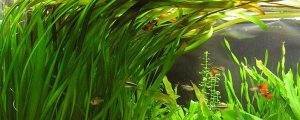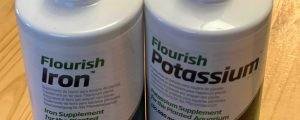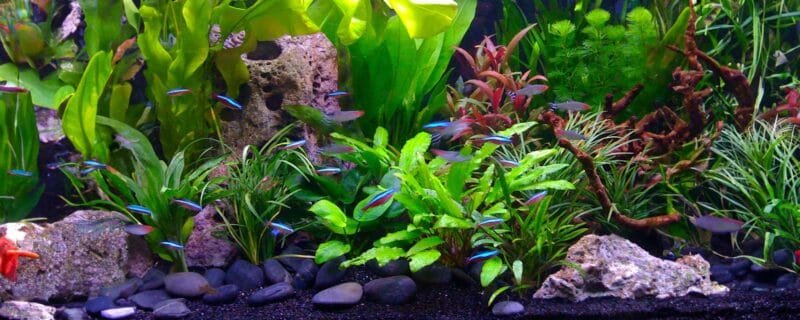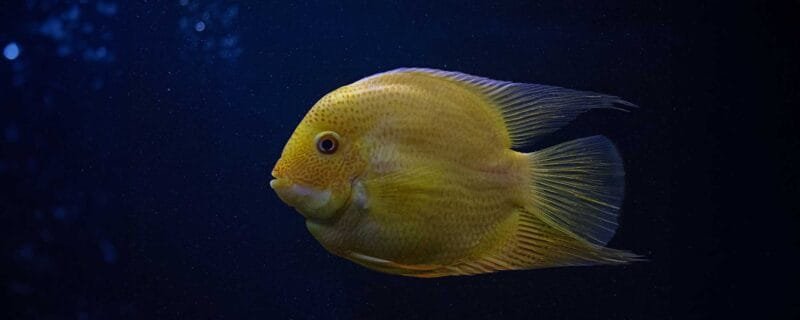Live plants are a fantastic addition to freshwater aquariums, enhancing water quality, reducing algae, and creating a more natural habitat for fish. Among the many available species, Cabomba stands out as a lush, feathery favorite. With its finely divided leaves and vibrant green or purple tones, Cabomba brings elegance and movement to any aquascape. But while it’s undeniably beautiful, it does come with a few quirks that aquarists—especially beginners—should understand to keep it thriving.
Let’s explore why Cabomba is a beloved plant in the hobby and how you can master its care.
Plant Profile
Scientific and Common Names
-
Scientific Name: Cabomba caroliniana (Green Cabomba), Cabomba furcata (Red Cabomba)
-
Common Names: Cabomba, Carolina Fanwort, Green Cabomba, Red Cabomba
Natural Habitat and Geographic Origin
Cabomba is native to the southeastern United States but has spread throughout South America and even parts of Asia and Europe (sometimes considered invasive in the wild). It grows in slow-moving rivers, streams, and ponds where water is clear and nutrient-rich.
Plant Type
Cabomba is a rooted, stem plant known for its bushy, fan-like foliage. It anchors in substrate but absorbs most nutrients from the water column.
Typical Growth Pattern
It grows vertically with fine, feathered leaves extending in whorls around a central stem. In optimal conditions, it can grow rapidly—up to an inch per day.
Ideal Placement
-
Placement: Background (primarily) or midground in taller tanks
-
Aquascape Role: Adds texture, vertical height, and natural shelter for fish and fry
Care Guide
Lighting
-
Intensity: Moderate to high
-
Type: Full-spectrum LED or fluorescent lights with a Kelvin rating between 5000–7000K
-
Duration: 8–10 hours daily
Cabomba is a light-hungry plant. Insufficient lighting often leads to leggy stems or disintegration. High light helps it maintain bushy growth and rich coloration.
Water Parameters
-
Temperature: 22–28°C (72–82°F)
-
pH Range: 6.0–7.5
-
Hardness: Soft to moderately hard (3–8 dGH)
Cabomba prefers slightly acidic, soft water. It can adapt to harder water but may struggle in extremes.
Substrate Preferences
Although it roots into gravel or sand, Cabomba doesn’t draw heavily from the substrate. A nutrient-rich substrate is helpful but not essential.
-
Best Option: Sand or fine gravel, supplemented with root tabs if needed
-
Avoid: Coarse gravel that may damage delicate roots
Fertilization and CO₂
-
Fertilizers: Liquid fertilizers rich in micronutrients and iron
-
Root Tabs: Optional but beneficial
-
CO₂ Injection: Strongly recommended for optimal growth and color
Without CO₂, Cabomba can survive but will grow slower and appear dull. In CO₂-injected tanks, it thrives with intense green or reddish hues and tight internodes.
Trimming, Propagation, and Growth Rate
-
Trimming: Regularly trim top stems to encourage bushier growth
-
Propagation: Snip healthy stems and replant them directly into the substrate
-
Growth Rate: Fast under optimal conditions
Cabomba can quickly become overgrown, so routine pruning helps maintain balance and prevents shading of lower plants.
Aquascaping Tips
Using Cabomba Effectively
Cabomba adds texture and softness to a tank’s backdrop. In Dutch-style layouts, it’s often used to create contrast against broader-leafed plants. In Nature Aquariums, it can mimic the look of aquatic ferns or delicate underwater forests.
-
Tip: Group stems in clusters of 3–5 for a fuller appearance
-
Layering: Place behind hardscape like driftwood or rocks for natural flow
-
Color Accents: Use red/purple Cabomba (e.g., C. furcata) for contrast in green-heavy tanks
Compatibility with Other Plants and Materials
-
Plant Companions: Works well with taller stem plants like Ludwigia, Limnophila, or Vallisneria
-
Hardscape: Safe with all driftwood and rock types (no chemical interactions)
-
Tank Styles: Ideal for:
-
Dutch aquascapes
-
Nature-style tanks
-
Biotope setups mimicking slow U.S. rivers
-
Tank Size Considerations
-
Minimum Tank Size: 10–15 gallons
-
Best In: Medium to large tanks (20 gallons+), where vertical growth is appreciated and not cramped
Tank Mates and Compatibility
Best Fish and Invertebrates
Cabomba’s soft, delicate leaves provide excellent hiding spots and breeding grounds, especially for shy or small fish.
Ideal Tank Mates:
-
Rasboras
-
Guppies and Endlers
-
Shrimp (Amano, Cherry)
-
Snails (Nerite, Mystery)
Species to Avoid
Avoid aggressive plant-eating species that love to nibble soft foliage.
Cabomba-Eating Culprits:
-
Goldfish
-
Silver Dollars
-
Cichlids (Oscars, Severums)
-
Larger Plecos (especially when hungry or lacking veggies)
Common Problems and Solutions
1. Melting or Deterioration
-
Symptoms: Leaves disintegrate, stems become mushy
-
Cause: Transplant shock, low light, poor water quality
-
Solution: Trim rotting sections, improve light intensity, and ensure clean, stable water
2. Algae Overgrowth
-
Symptoms: Hair algae on leaves, black beard algae on stems
-
Cause: Excess nutrients, poor flow, inconsistent CO₂
-
Solution: Increase flow, maintain CO₂/ferts balance, reduce photoperiod if needed
3. Floating Stems
-
Symptoms: Newly planted stems come loose
-
Cause: Weak anchoring or too buoyant
-
Solution: Use plant weights or plant deeper; let roots establish before re-trimming
4. Pale or Yellowing Leaves
-
Cause: Nutrient deficiencies (often iron or nitrogen)
-
Solution: Dose comprehensive liquid fertilizer more consistently
5. Leggy Growth (long stems, sparse leaves)
-
Cause: Inadequate lighting
-
Solution: Increase light intensity or shorten photoperiod and monitor results
Conclusion
Cabomba is a stunning addition to freshwater aquariums—adding natural motion, brilliant color, and soft texture that brings aquascapes to life. While it can be a bit demanding in terms of lighting and maintenance, the reward is worth the effort. Its rapid growth and striking form make it ideal for filling out backgrounds or creating vibrant plant clusters in your tank.
Tips for Long-Term Success
-
Provide high light and consistent CO₂ if possible
-
Trim regularly to keep growth compact and healthy
-
Keep water parameters stable and clean
-
Pair with peaceful, plant-safe fish and inverts
If you’re ready to level up your planted tank game, Cabomba is a fantastic choice for aquarists looking to create lush, dynamic underwater landscapes.
FAQs
Q1: Is Cabomba suitable for beginners?
A: Cabomba is semi-demanding. It’s not ideal for complete beginners due to its light and nutrient requirements but manageable with research and stable conditions.
Q2: Can Cabomba grow without CO₂ injection?
A: Yes, but growth will be slower and leaves less vibrant. CO₂ helps it reach its full potential in density and coloration.
Q3: How do you propagate Cabomba?
A: Simply cut a healthy stem section (4–6 inches long) and replant it in the substrate. It will grow roots and continue developing if lighting and nutrients are sufficient.






